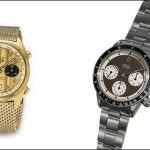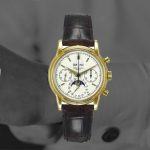Interview with Philip Van Dedem Founder CEO – The Collector’s Index
The Collector’s Index is a platform analyzing auction results, giving all trends and market indicators in the field of Collectables for Watches, Cars and Whisky. Based in London, Philip Van Dedem took the time to answer our questions to better understand his concept and the mechanics around his analysis of the watch market.
How the idea of a digital platform around market data analysis for auction results came to you ?
The idea came to me during my time at the Fine Art Fund Group in London, where my main task was to create Excel spreadsheets of artists to analyze the investment potential.
While using various platforms that report on auction results for artworks I started thinking about my other passions and could not find a similar or even better platform on the web. This drove me to become an entrepreneur to create a research platform that would show on a chart all the matrixes that are value to a collector for every watch/car model and any whisky bottle.
What are the tastes and trends among watch collectors nowadays ?
Depending on what a collector likes to collect. Vintage or Modern… both have attractive features. Modern pieces can be bought with less of a fear to buy something wrong. With this I mean the originality or condition of the watch. When buying vintage, there are numerous ways to buy something wrong for ex. replaced hands, bezel or the dial has been repainted to suit the modern collectors… which is a real shame. And usually vintage pieces need more servicing.
What are the trends to come (in terms of shapes, materials, sizes …) ?
Sizes vary usually by maker, model and complication. But the general trend is currently 38 -40mm. And since the Asian market is declining, more watch makers are focusing on the 40mm plus sizes to cater the European and American market.
Special dials, double signatures … Do these trends apply to modern as well as vintage watches ?
For vintage watches: Black dial, special ordered watches, double signed dials with often retailer’s name tend to sell with a premium.
For Modern watches: Time will tell, if the watch market is prepared to pay a premium at auction for a double signed dial. For example, the Antiquorum sale this February 2017 sold a 2010 Patek Philippe ref. 5170J with a Beyer signature on the dial sold for $48,750 which sells for around $75,000 via a very specific dealers market. But if this would have been a vintage model, the effect of the double signed dial would be much greater.
Which brand/model should we bet according to The Collector’s Index to start one’s collection and for a good investment ?
There is a long list of brands that most collectors usually ignore. Just to name a few: Eberhard, Gallet, Bovet (1940s chronographs), Longines military watches, Mulco, and Wittnauer. These brands made some fantastic time only and chronograph complications and are highly undervalued.
Do you observe different “must have” models or brands among clients according to auction locations ?
Yes, each market has its forte. The trends in size, case material and brand change in each market. To name one market: So far auction houses are trying include around +15% of diamond bezel or dials in their Hong Kong Auction and focus on smaller size Patek Philippe such as the Calatrava ref. 96.
The Collector’s Index can track back prices of sold pieces and their historical value ; can you give us an example to explain it to us ?
The Collectors Index can track down auction results of the past 25 years and when it comes to vintage models, you can find out the entire price evolution of any brand and model that has been sold at auction. We currently scan 1800 auction houses and find even the watches, that are sold in a mix lot auction of for example in a stamps and books auction that occasionally have the odd watch or two. Please see the graphic of Patek Philippe reference 2499 which best gives the market trend on watches.
Special thanks to Philip Van Dedem.
Geoffroy Ader








